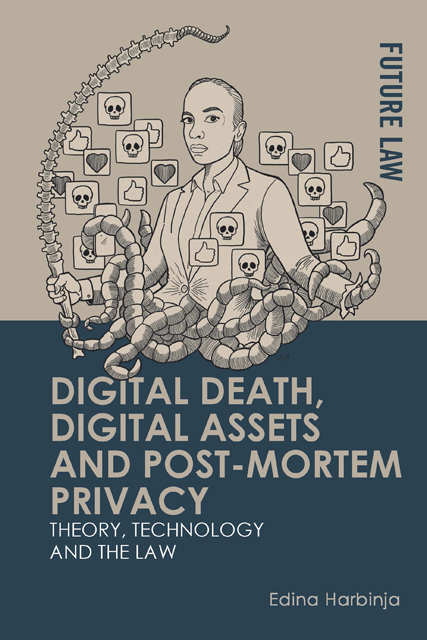Book contents
- Frontmatter
- Contents
- Acknowledgements
- Table of Cases
- Table of Legislation
- 1 Introduction
- 2 Theoretical Underpinnings: Property
- 3 Theoretical Underpinnings: Autonomy, Testamentary Freedom and Post-Mortem Privacy
- 4 Social Networks
- 5 Games, Virtual Worlds and Virtual Realities
- 6 Emails
- 7 Conclusion
- Bibliography
- Index
3 - Theoretical Underpinnings: Autonomy, Testamentary Freedom and Post-Mortem Privacy
Published online by Cambridge University Press: 25 April 2023
- Frontmatter
- Contents
- Acknowledgements
- Table of Cases
- Table of Legislation
- 1 Introduction
- 2 Theoretical Underpinnings: Property
- 3 Theoretical Underpinnings: Autonomy, Testamentary Freedom and Post-Mortem Privacy
- 4 Social Networks
- 5 Games, Virtual Worlds and Virtual Realities
- 6 Emails
- 7 Conclusion
- Bibliography
- Index
Summary
This chapter examines the primary underpinning value of the book, namely autonomy, and its relationship with the concept of post-mortem privacy. This analysis will be relevant to the case studies of emails and social networks due to the prevalence of personal data and privacy issues in these digital assets. The analysis can also apply to any other highly personal digital asset, any aspect of digital legacy and remains that intrinsically relates to what we consider our ‘self ’, who we are, or, as Floridi puts it, our ‘informational body’. The issue of post-mortem privacy is less relevant to games and virtual worlds since players usually take up imaginary identities and do not share their personal data and the real-life identities therein. It is also less relevant to highly monetary assets, such as virtual currencies.
In my earlier work, I have set up foundations for the theory and law of post-mortem and, later, postmortal privacy. The discussion in this chapter will consolidate these foundations and deepen the analysis of all the relevant concepts, including autonomy, privacy and data protection.
As discussed in Chapter 1, various stakeholders are concerned with the issues and the analysis in this book (users, families, service providers, friends, society). When considering choices amongst their interests, both doctrinal law and theoretical justifications for recognising the property status of digital assets do not always give a clear answer. I thus take a normative stance and promote the user’s interests over their family or intermediaries in this instance. The reason is that autonomy is asserted as the key concept driving the development of the law in this area, as seen in the discovery of post-mortem privacy. Simultaneously, the technology market has a clear drive to provide such autonomy via Google Inactive Account Manager or Facebook Legacy Contact. Furthermore, the US Uniform Law Commission work in the area and some data protection statutes in Europe illustrate a significant policy drive towards greater recognition of post-mortem privacy.
I contend that if one of the digital assets analysed in the subsequent chapters can be considered property, then the answer is clear, and they do transmit on death. Conversely, if this conclusion cannot be established, then the user’s interests and autonomy might not be met. In such circumstances, reform of the law might be required.
Information
- Type
- Chapter
- Information
- Digital Death, Digital Assets and Post-Mortem PrivacyTheory, Technology and the Law, pp. 52 - 83Publisher: Edinburgh University PressPrint publication year: 2022
